Ghost hunting

A silhouette of the first ghost mantis (Phyllocrania paradoxa) recorded from Gorongosa National Park in Mozambique.
I have been working in Africa for quite a while and during this time I have seen my share of iconic animals that epitomize the awesome continent’s fauna. There are still, of course, many that I yet need to meet in person – aardvark, “hairy” Trichobatrachus frog, Acridoxena katydid, to name a few – but luck or stubbornness allowed me to witness others. Few things can match the elation of meeting the gaze of a foraging chimpanzee, discovering a toy-like primate poto in the forest canopy over my head, or running into a fight between a hyena and a leopard over a freshly killed kudu. But my first encounter with one of the less known species, the ghost mantis (Phyllocrania paradoxa), was at least as memorable.
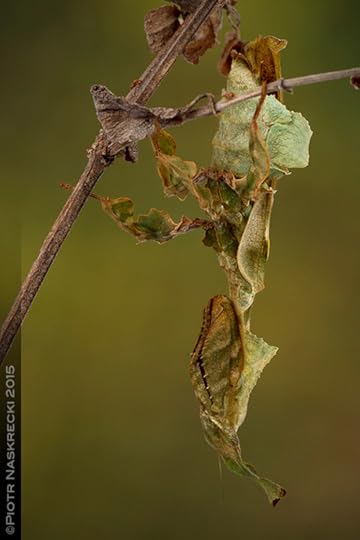
A female ghost mantis (Phyllocrania paradoxa) – these insects are such superb mimimcs of dry vegetation that it is often difficult to tell which part belongs to the plant and which to the insect.
It happened during my first trip to Zimbabwe, at the time when the tumor in Robert Mugabe’s brain was still semi-dormant and the country, “Africa’s bread basket”, was experiencing its first and only period of relative political freedom and economic prosperity. I was staying with a group of friends in the suburbs of the recently re-christened capital Harare, vaguely intrigued with, but blissfully ignorant of why so many houses were standing empty, their gauged windows bordered with the mascara of freshly extinguished flames. Africa was new to me, and I inhaled its intoxicating atmosphere and devoured the sights of alien landscapes and even more alien fauna. But I came prepared – for years before my first visit I had been voraciously reading all that I could find about insects and other members of Africa’s smaller majority. The ghost mantis was one of my most desired quarries and I started looking for it the moment I landed. Alas, a month on and with no trace of the animal, it was beginning to feel as if I were really hunting a ghost. I had spent countless hours sifting through the leaf litter, scanning bushes and trees, sweeping my net through all kinds of vegetation – nothing.
One day I stood on the platform of a railway station, waiting for a train to take me to Bulawayo. It was late October, the peak of the dry season, and shriveled leaves were falling from trees onto my head in a rare, merciful breeze. One, fairly large and twisted brown leaf landed on my shoulder. I tried to brush it off but it just sat there, trembling in the wind. I flicked it again. It landed lower on my sleeve. And then the leaf started to climb up my arm. I looked, still not believing. Could it be? No, this is just a piece of withered plant. But it was, finally, a ghost mantis.
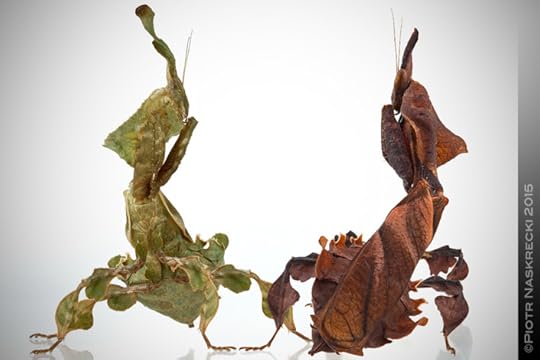
No two individuals of ghost mantids are alike, which prevents their principal predators, birds and primates, from learning how to tell them apart from real leaves.
That was 25 years ago and it took me this long to run across another one. In fact, I had more run-ins with the notoriously elusive leopards than with this incredible insect. But this year, in April, I was finally able to confirm ghost mantids’ presence in Mozambique’s Gorongosa National Park (something that I have always suspected), when my friend, entomologist Marek Bakowski, found the first individual during our annual biodiversity survey. Since then I have encountered a few more ghost mantids in the park.
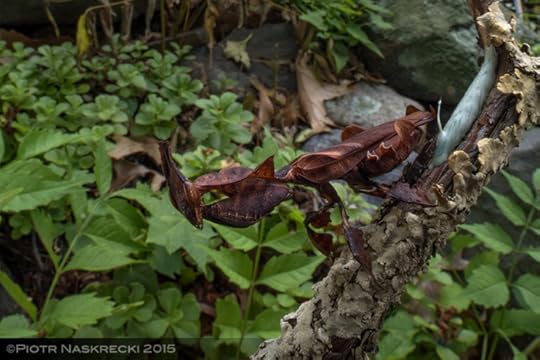
A Gorongosa ghost mantis with a freshly laid ootheca.
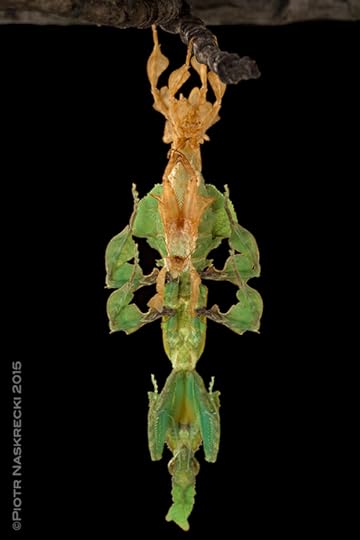
A molting ghost mantis.
Thanks to their otherworldly appearance ghost mantids have long been the favorite of amateur insect collectors and, since they can be easily bred in captivity, they have recently become very popular in the pet trade. Now all you need to do to see a live ghost mantis is to pay a few bucks online and one will be delivered to your door. But for an animal so widely kept, shockingly little is known about its biology and behavior in its natural habitat. Nobody is even sure how many species of ghost mantids there are. Three species of the genus Phyllocrania have been described, only to be synonymized a few years ago. All three were recognized as separate species based on the differences in the shape of the leaf-like process on the head, which can vary wildly within the same population. Ghost mantids, like many other insects that rely on leaf-like camouflage, display an ungodly degree of polymorphism, and no two specimens are alike. But the species’ distribution, throughout sub-Saharan Africa and Madagascar, hints at the possibility of distinct, genetically isolated lineages.
Like most praying mantids, the ghost mantis is an ambush predator, a truly superb one. But unlike many others, it is not inclined to attack members of its own species, and I know of no case of the female devouring a male during copulation, as it is often the case in some other lineages of these insects. In Gorongosa ghost mantids are found mostly in the understory of miombo and mopane woodland, and the only time I witnessed one feeding, it was chomping on a grasshopper. Females produce strange, caterpillar-like oothecae, and newly hatched nymphs look and behave like black ants; after the first molt they turn into perfect replicas of dried-up chaff. How males and females find each other, however, is a mystery to me. It is likely that females, like in other highly cryptic mantids, produce sex pheromones to attract their mates.
Next on the list of African biodiversity icons to confirm in Gorongosa, the Devil mantis. I know you are there and I will find you.
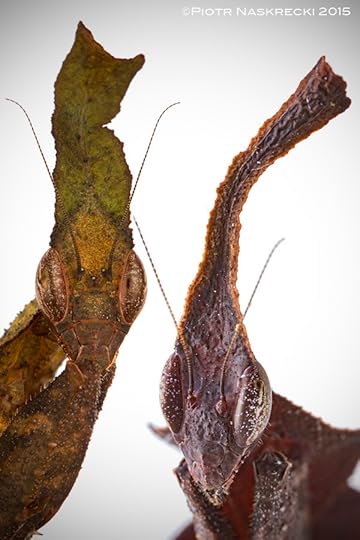
Ghost mantids are extremely polymorphic in both their coloration and the shape of the strange processes on their heads.
Filed under: Gorongosa, Macrophotography, Mozambique, Praying mantids


Piotr Naskrecki's Blog
- Piotr Naskrecki's profile
- 9 followers



